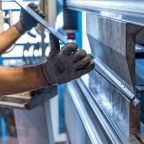
Title: The Role of Plastic Injection Molding in Packaging
Plastic injection molding is a widely used manufacturing process that finds application in a variety of industries including automotive, consumer, medical, aerospace, and electronics. It is a versatile and economical production method that can produce a wide range of plastic products, from small components to large and complex parts.
The plastic packaging industry is an important industry worldwide, which includes various types of plastic products such as food packaging, medical packaging, daily necessities packaging, and industrial packaging. With the continuous development of technology and market, the development of the plastic packaging industry also presents the following trends.
II. Historical Perspective
There are several basic technologies for the production of packaging, which in general coincide with the main types of plastics processing. Four main types of production processes can be distinguished in terms of production volume: extrusion, injection molding, blow molding, and pneumo-vacuum molding.
Injection molding on injection molding machines produces piece packaging products, such as various containers, closures, preforms for subsequent blowing, etc. The process of molding thin-walled packaging products is often accompanied by an in-mold labeling process (IML technology casting), which allows you to immediately apply any images and information to the product, bypassing subsequent printing.
III. Advantages of Using Plastic Injection Molding for Packaging
Durability and longevity of plastic packages
There are several basic reasons why plastic injection molding is considered the most acceptable and effective form of injection molding. The process itself is quite fast compared to other methods, and the high productivity of the products makes it even more efficient and cost-effective.
To make sure you choose the plastic packages which provide durability and longevity the following elements should be considered: impact force (impact resistance), tensile strength (tensile load) of plastic injection mold tooling, modulus of elasticity, heat absorption, and water absorption.
Design flexibility and customization
Choosing the right material and product color are the two main factors in the plastic injection mold design of a plastic part for packaging. Given the wide variety of both of these components, there are many variations of their combination.
Advances in the field of polymers have reached significant heights in recent years and have contributed to the development and invention of new polymers/resins.
Polymers can be painted over using various coloring systems, each of which has its own characteristics, advantages, and disadvantages.
Sustainability and recyclability
During the process of plastic injection molding, now mostly companies are using sustainable and eco-friendly technologies with the help of recycling. For packaging, the most eco-friendly plastics manufacturers use state-of-the-art machinery and equipment to reduce waste, reduce shipping and packaging costs. The latter ensures high quality, consistency, and optimal security.
Cost-effectiveness at scale
In the packages industry, the labor costs of plastic injection molding are generally low compared to other methods. Injection molding equipment typically works with stand-alone, automated tooling to streamline processes and ensure smooth production with minimal oversight. And the ability to produce parts at a high enough level with a high throughput contributes to the economy and efficiency of the process.
IV. Common Packaging Products Made Through Plastic Injection Molding
Today in the world, the packaging industry has vital importance as its applications are used in all sectors of the economy. lats list down some of them.
- bags and films (flexible packaging)
- bottles and containers
- Caps and closures (lids, stoppers, caps)
- thin-walled containers for food storage (so-called cortexes, boxes)
- Containers for non-food products, providing the convenience of display in the store and the attractiveness of the product
- Universal containers for various applications
- Industrial packaging (thick-walled boxes and other materials for the storage and transportation of fruits, and industrial goods).
In addition to these, there are dozens of other types of packaging products for various applications used in all sectors of the economy.
V. Challenges and Solutions in Plastic Injection Molding for Packaging
Addressing environmental concerns
It is believed that plastics are causing environmental concerns but Plastic Injection Molding for Packaging has a solution for it which is recycling. Recycled plastics meet the highest quality standards and the requirements of packaging productivity with the help of green technologies.
Thanks to current technology, these processes are not only fully regulated, but also guarantee the safety of plastics, both for food and non-food uses.
- Ensuring product safety and compliance
Innovations addressing these challenges
Against the backdrop of rising logistics costs worldwide, energy efficiency improvements are becoming increasingly important, especially in the plastic packaging industry. In order to reduce logistics costs and energy consumption, companies need to develop lightweight, high-strength, and high-rigidity plastic packaging materials. For example, adopt innovative technologies in plastic injection molding, recycle waste plastics, and implement green logistics to save energy and reduce consumption. Only in this way can enterprises truly achieve high efficiency and energy saving and improve market competitiveness
VI. Future Trends in Plastic Injection Molding for Packaging
Biodegradable plastics and green initiatives
Environmental protection has become a hot topic in society, and the environmental protection of plastic packaging has also received widespread attention. In order to reduce environmental pollution, companies need to find new recyclable, plasticizable or degradable materials to replace traditional plastic packaging materials. With the advancement of technology, more and more environmentally friendly plastic products are emerging in the market. For example, PLA (polylactic acid) material, which can be produced from renewable resources such as cornstarch, has good degradability and has gradually become a popular product in the market.
Smart packaging with integrated technology
With the development of the global supply chain, various industries, including the plastic packaging industry, are accelerating the speed of digitalization and smart systems. In addition, Smart packaging has also become a major new trend in the market. Smart packaging can be connected with devices such as mobile phones and computers, and interact with customers through code scanning and voice to improve customer purchasing experience, make packaging more personalized and digital, and effectively improve the competitiveness of enterprises.
VII. Conclusion
If you want to excel in the packaging industry, you must know that the newest technologies in injection molding are the best solution. With the latest technologies and by choosing a reputable and experienced company like TDL moulding company which can really know the role of plastic injection molding in the packaging industry, you can achieve the best products. In addition, the company must also have state-of-the-art machinery that can ensure that the production is unique and excellent.














